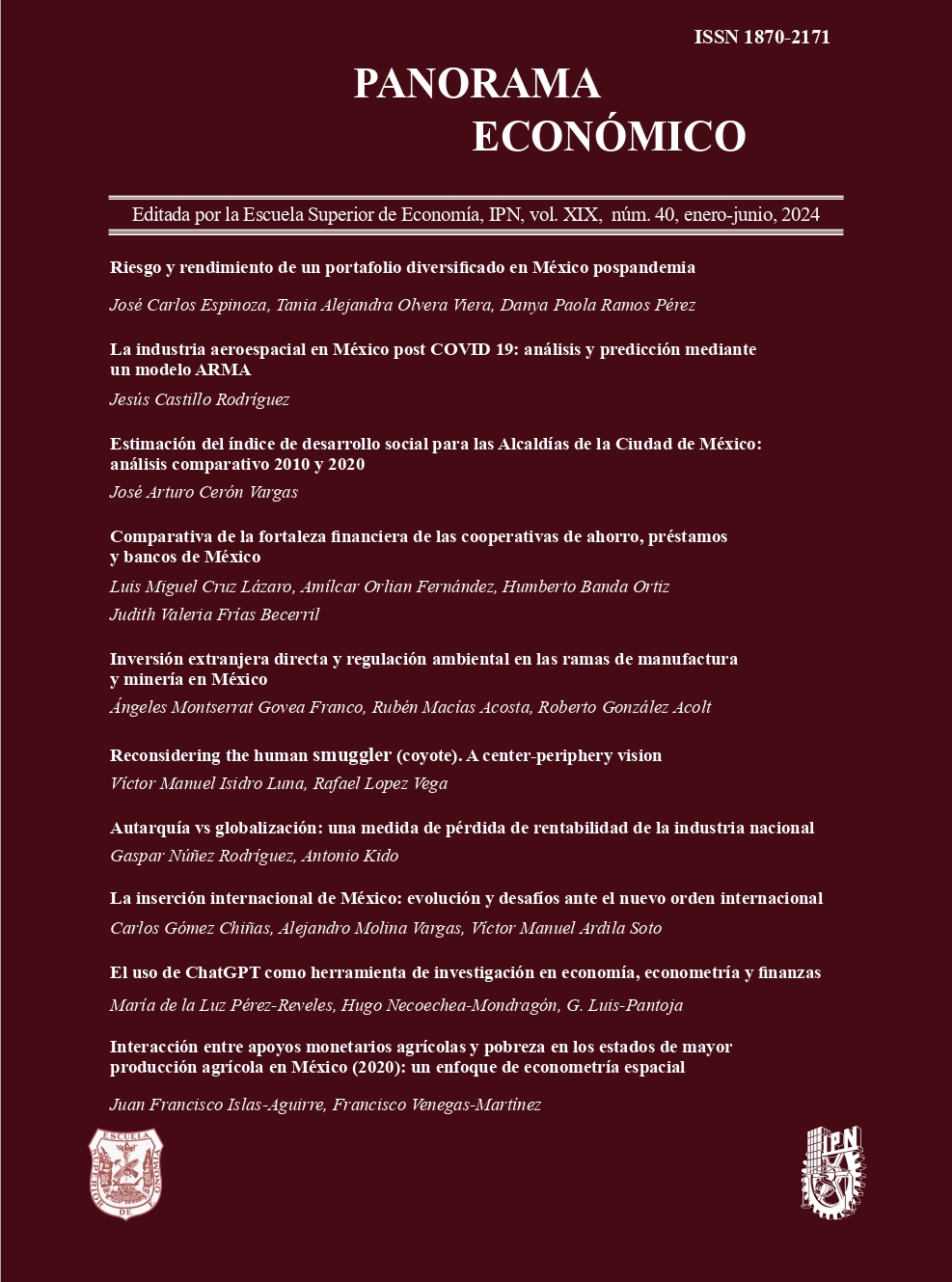Reconsidering the human smuggler (coyote). A center-periphery vision
Contenido principal del artículo
Nearly 2.5 million irregular migrants hired a human smuggler in 2016 with a
profit of US$ 5.5-7 billion. Smugglers not only transport people illegally but also
are frequently associated with other illegal activities, which has concerned international
organizations as well as nation-states for decades. Despite human
smuggling being an illegal activity, some scholars, based on the notion of social
capital, argue that it may be a legitimate (Sanchez 2017; Spener 2009) and even
developmental strategy (Spener 2009). Studying the northeast border of Mexico,
Spener describes a “Clandestine-Crossing” smuggler, who comes from the
community of the migrant, does not search for financial advantage, and
mostly engages in exchanges of social capital. In this article, we examine if a
type of social coyote is identifiable using the Mexican survey Encuestas sobre
Migración en la Frontera Norte; if in Mexico the distribution of social capital in
hiring a coyote is similar by sex and region; and if a center-periphery analysis
contributes to better explaining the irregular migration on the Mexican north
border than social capital theory. Our conclusions are that we can identify a
Clandestine-Crossing coyote, but such a coyote charges a high price, there are
regional differences in the use of social capital, the coyote-migrant relationship
is not a developmental policy, and it is possible to better understand, and solve,
the problem of irregular migration using center-periphery analysis.
Detalles del artículo

Esta obra está bajo una licencia internacional Creative Commons Atribución-NoComercial-SinDerivadas 4.0.







